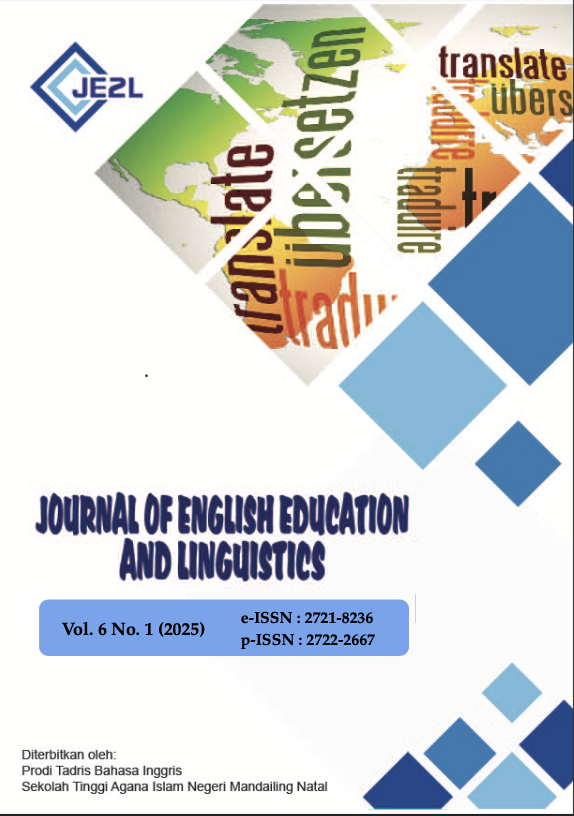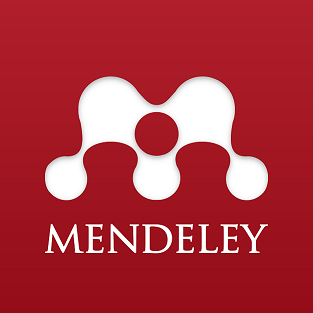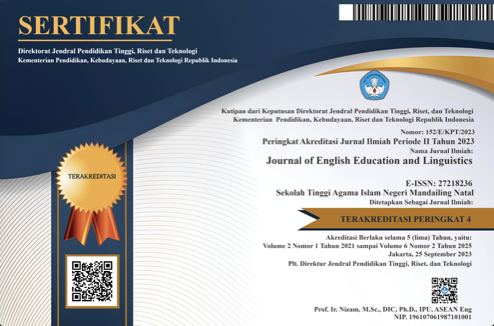DEVELOPMENT OF BASIC ENGLISH GRAMMAR LEARNING MATERIALS USING SOCIAL MEDIA PLATFORM YOUTUBE AT SMK NEGERI 2 RANTAU UTARA
DOI:
https://doi.org/10.56874/jeel.v6i1.2290Keywords:
Basic English grammar; Instructional media; YouTube; ADDIE; Vocational educationAbstract
This study aims to develop effective and engaging basic English grammar learning materials using the YouTube social media platform for eleventh-grade students at SMK Negeri 2 Rantau Utara. The research employed the ADDIE development model, which includes five phases: Analyze, Design, Develop, Implement, and Evaluate. Data collection techniques included expert validation, student questionnaires, and pre-test and post-test assessments. A total of 20 students participated in the trial implementation. The results of media validation showed a feasibility score of 86%, while content validation reached 93%, indicating that both the media and materials are valid for instructional use. Student feedback revealed high practicality, and learning outcome analysis showed significant improvement, with average post-test scores increasing from 75 to 93.2. These findings suggest that integrating YouTube as a learning platform can enhance students’ understanding of basic English grammar and contribute to a more interactive and student-centered learning environment.
References
Helzafah, A. S. (2018). Educational Technology Library Series EDUCATIONAL MEDIA Definition, Development, and Utilization. Jakarta: PT Raja Grafindo Persada.
Fitria, H. (2018). Guidelines for Diagnosing Student Potential. Jakarta: Ministry of National Education Directorate General of Primary and Secondary Education Directorate of Secondary Education First.
Anitah, S. (2017). Instructional Media. Surakarta: Yuma Pustaka.
Elisa. (2021). New Directions for the Development of Islamic Education Empowerment, Curriculum Development to the Redefinition of the Islamization of Knowledge . Bandung: Nuansa.
Ismanto, H. (2019). English teaching aids were successfully designed using Macromedia Flash Professional. Jurnal Terampil.
David, D. C. (2019). Practical Research Methods: A Guide. Yogyakarta: Pustaka Belajar.
Rohmah, N. (2020). Media Sosial Sebagai Media Alternatif Manfaat dan Pemuas Kebutuhan Informasi Masa Pandemik Global Covid 19 (Kajian Analisis Teori Uses And Gratification). Al-I'lam: Jurnal Komunikasi dan Penyiaran Islam, 4, 1.
Kusuma, K. (2022). Development of Interactive Learning Media Based on Articulate Storyline on Telephone Communication Material in English at SMK IPIEMS Surabaya. Journal:undikma.
Sugiyono. (2017). Quantitative, Qualitative, and R&D Research Methods. Bandung: Penerbit Alfabet.
Harahap, A. L. (2024). Development of Blog-Based Partuturon Material on Local Content Subjects to Improve Children's Cultural Literacy at SD Negeri 200309 Purwodadi. Aksara;Jurnal bahasa dan sastra, 25(2).
Safitri, R. (2022). Development of Interactive Learning Media Gather Town on Meeting Material at SMKN 1 Surabaya. Jurnal Pendidikan Administrasi Perkantoran (JPAP).
Wulandari, W. (2023). Analysis of Factors Influencing the Role of Social Media Youtube in Learning the Material on Classification of Living Things. Berajah Journal.
Downloads
Published
Issue
Section
License
All articles published in the Journal of English Education and Linguistics are licensed under a Creative Commons Attribution-ShareAlike 4.0 International (CC BY-SA) license. This means anyone is free to copy, transform, or redistribute articles for any lawful purpose in any medium, provided they give appropriate attribution to the original author(s) and Journal of English Education and Linguistics, link to the license, indicate if changes were made, and redistribute any derivative work under the same license.
Copyright on articles is retained by the respective author(s) without restrictions. A non-exclusive license is granted to the Journal of English Education and Linguistics to publish the article and identify itself as its original publisher, along with the commercial right to include the article in a hardcopy issue for sale to libraries and individuals.
Although the conditions of the Creative Commons Attribution-ShareAlike 4.0 International (CC BY-SA) license do not apply to authors (as the copyright holder of your article, you have no restrictions on your rights), by submitting to the Journal of English Education and Linguistics, authors recognize the rights of readers and must grant any third party the right to use their articles to the extent provided by the license.

This work is licensed under a Creative Commons Attribution-ShareAlike 4.0 International License.








